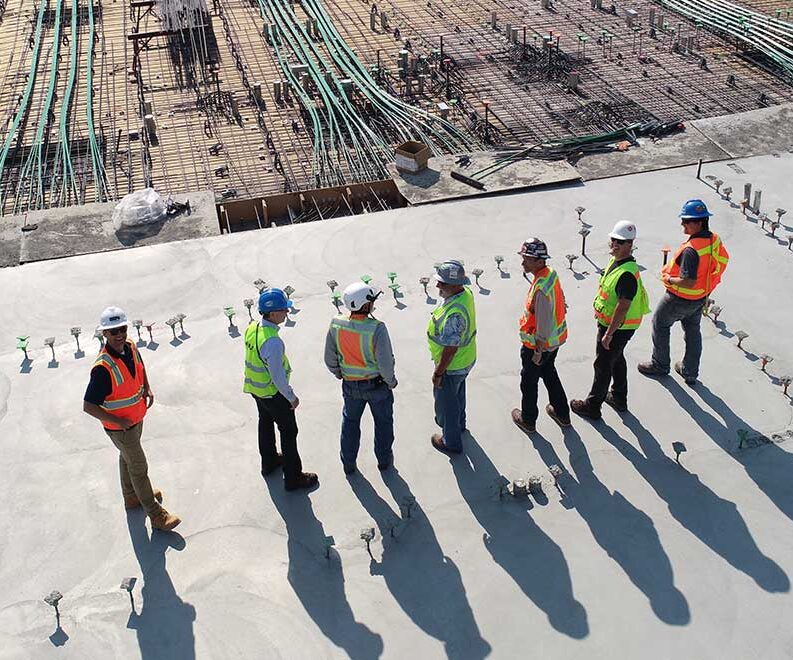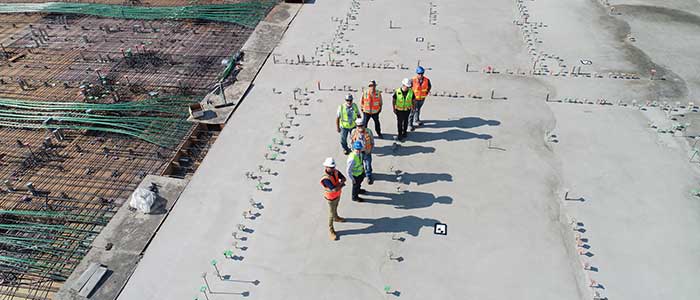Safety – Tailboard meeting
Tailboard meeting: Tailboard meeting template and other helpful info
In this article, learn everything about tailboard meeting, including a customisable template, key discussion points, and tips for conducting effective and engaging safety briefings to ensure clear communication, address potential hazards, and promote a culture of safety and preparedness in the workplace.

Tailboard meeting definition
A tailboard meeting is a job briefing which industrial companies and supervisors use to brief existing and new site workers on hazards associated with the job, the work procedures and specific precautions associated with this job, and energy source controls, personal protective equipment and other safety considerations.
The main purposes of a tailboard are to increase hazard awareness and reduce workplace accidents with the end goal of approaching zero harm and eliminating workplace incidents and injuries.
Tailboard meetings are similar to toolbox talks and tailgate meetings, but they are more of a specific briefing for an individual or team to ensure all workers on the job site have the same adequate knowledge of the job processes which will be utilised.
Tailboard meetings are also more formal than some of the other safety meetings as they are more training related and specific, with some sites and regions requiring tailboard meetings by law.
In terms of the mechanics of tailboard meetings, they are conducted before work has started at a job site and are usually documented on a form and signed off by attendees.
Different companies may have different cadences and procedures for their tailboard meetings, but all companies who engage in them will do a tailboard job briefing whenever a new worker joins the job site or when there are significant changes to work processes.
In areas where tailboard meetings are a required safety procedure, the standard procedure is that if operations remain similar and repetitive, there will be at least one briefing before work starts each day.
Additional briefings are required when there are marked changes in processes as previously mentioned.
The only other variable in your tailboard meetings is how long they take. Once again, this is typically variable and will depend on the job being performed, the number of new workers and other variables.
In general, a brief discussion is adequate when the job is straight forward while a more extensive meeting is required when the job is particular dangerous and the hazards non-obvious.
Tailboard meeting form template
As was previously mentioned, most companies who use tailboard meetings document them via a tailboard meeting form. These forms serve to provide proof of the meetings taking place for internal and external audits and other purposes and they also serve to provide evidence of what hazards and issues were discussed during the meeting/s so that can be referenced later on if there are specific incidents or investigations.
On top of that, using a tailboard meeting template provides a framework and guidelines for the person documenting the talk, so that they never miss anything important.
The lead worker or supervisor will complete this tailgate form and have attendees sign off.
The tailboard meeting form template shows you what this form usually looks like (click on the template to expand it and see other pages).
This tailboard meeting form template comes pre-built with all of these core sections, and you can also add in PPE and other important sections with drag-and-drop functionality.

Use this tailboard meeting framework for free now.
Tailboard meeting topics
Tailboard meeting topics aren't as difficult to come up with or manage as toolbox talk topics and other informal safety meetings.
Because tailboard meetings are briefings about a days work and about specific job steps and hazards, you'll want to keep them really focused on the job at hand.
Tailboard meetings are often the easiest safety meetings to conduct and manage because they are really contextual for workers. Existing and new workers on site need to understand the site and job well, and they are usually engaged with the steps associated with performing that task.
Getting feedback and insights from workers on every tailboard meeting topic is a great way to improve engagement and make sure that all workers are on the same page.
Streamlining your tailboard meetings
As you can probably imagine, conducting and documenting these meetings every day comes with its own set of admin challenges.
So the best way to manage tailgate meetings along with other safety processes is by digitising the capture, organisation and tracking of all of these documents.
Using cloud-based tools, companies today can easily document tailboard meetings with a mobile or tablet device, and all of those records are instantly synced to the cloud where they can be stored and searched for at any time.
This saves incredible amounts of time for the person conducting the tailboard meeting as well as for administrators and safety personnel.
It also ensures no important records get misplaced or lost. You can use a tailgate meeting app or general safety meeting app for tailboard and other safety meetings.
Tailboard meetings are a necessary safety tool for some companies, and an important one for all companies. Setting up good and reliable processes around your tailboard and other safety meetings is one of the best and easiest ways to ensure you build a safe work environment for all of your workers.

Tailgate Meeting Form template
This tailgate meeting form template makes documenting and organising your safety tailgate meetings quick and easy.

Meeting Minutes template
Capture, record and organise those meeting minutes.

Safety Toolbox Talk template
This toolbox talk template is quick and easy to complete and signoff on site, and keeps all of your toolbox talks neatly organised and professional.
